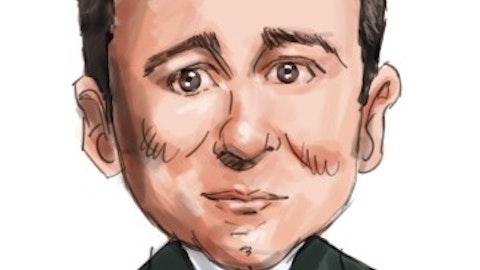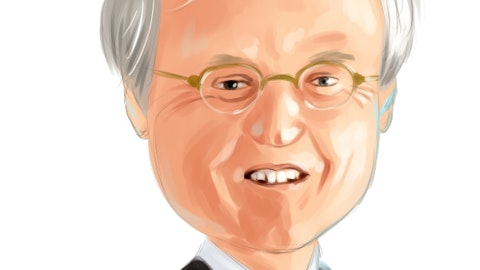Operator: Our next question comes from Karl Shepard with RBC Capital Markets.
Karl Shepard: Hey. Good afternoon and thanks for taking the questions.
Mike Price: You bet.
Karl Shepard: I know we are all trying to get a sense for the margin trajectory, but I guess I am kind of curious to ask how you feel about core momentum in the bank. I think your numbers look pretty good and you have Centric coming in equipment finance ramping. So how do you feel about just kind of the overall positioning of the bank as you go into 2023 and kind of strategic priorities?
Mike Price: Yeah. We just feel really good. I mean we feel like we are positioned in our lending business as well. Even the businesses that are hitting a bit of a speed bump like our fee businesses, we really believe in SBA and mortgage longer term, good, robust consumer lending through our branches. We are really building out our equipment finance platform or SBA. We have got new talent in C&I lending. We feel good about our company. And I think for those of you who have covered us for a number of years, the one thing we do is we get better every year. I mean this has been a march from a 60-basis-point ROA bank and we get 5 basis points, 10 basis points better every year. We are — we operate with the principle of operating leverage in every budget in every part of our bank.
We are just excited about the future of our company, we are excited about the new markets and it’s fun. And we feel like we make a difference with our clients and the value proposition that we deliver. We think we are turning our focus back to funding, but we have always been pretty good at funding and it’s just going to be fun to see how well we can do this year and how much core deposits we can gather. And then we just feel like there’s a couple more plays left in the playbook at least. We think our regional model starting to knit the bank together in six of our discrete markets, Northern, Southern, Central Ohio, Pittsburgh, Community PA and now this capital region. And I don’t know, we are just — we are excited about the future of our company and thanks for asking.
Karl Shepard: Thanks for the color. And as a, excuse me, as a follow-up too I wanted to ask, what kind of economy are you assuming in your loan growth guidance. I think we all have kind of a different view, but what kind of trends do you see today and what do you need to see over the next couple of quarters to get where you want to be?
Mike Price: Yeah. I mean our — for this year, just because of some downdraft in some places, we have been a little higher but probably 9%, 10% and we think commercial is on a good trick. And then, of course, we have a newer business that everything equipment finance adds $80 million in the second half of the year goes right to growth and higher spread growth, I might add. And so, Jim, anything you would add or Jane?
Jim Reske: I would say it’s not — we are not predicating those kind of expectations on a recessionary environment that requires a pullback in lending or the consumers start to it were unemployment is. I can tell you actually officially in our forecast, the weighted average forecast I keep referencing in this call, the unemployment rate goes to just over 5% by the end of the year. But we are not using that and saying that’s going to result in be pullback in loan volumes. In fact, we kind of see those things working together, because if there is some recessionary pressure on loan volumes slow down a little bit from what our expectations are then that will release some funding pressure and we will be fine that goes into the mix.
Mike Price: Jane, anything you would add, this is your world.
Jane Grebenc: The only thing that I would add, Mike, is in a couple of the businesses we are still seeing supply chain issues. The car business is still challenged, the equipment finance business still seeing supply chain issues, equipment is taking longer to be delivered and we are also seeing construction delays in some of our residential mortgage and SBA loans. So the economy still isn’t completely frictionless. We still see some of the COVID friction in the economy, but it’s not recessionary, it’s just friction.
Mike Price: Great point. Is that helpful?
Karl Shepard: Yeah. Thanks for all the color.
Operator: Our next question comes from Michael Perito with KBW.
Michael Perito: Hey. Good afternoon, guys. Thanks for taking my questions.
Mike Price: Hi, Michael.





